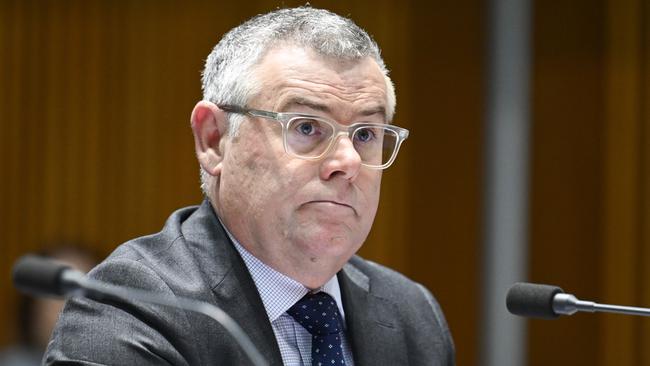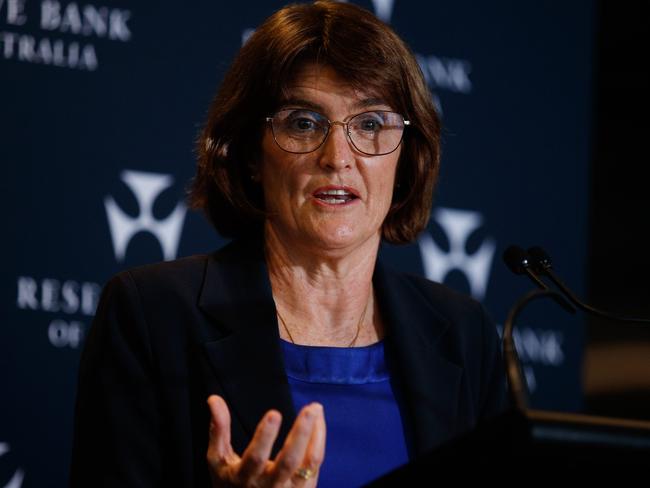Opinion: Modern Labor prefers fairytales to economic reality
Past Labor governments recognised the iron link between productivity and wages growth, but modern Labor seems to prefer fairytales, writes Matt Canavan.

Opinion
Don't miss out on the headlines from Opinion. Followed categories will be added to My News.
In the Australian classic children’s story The Magic Pudding, a koala, Bunyip Bluegum, comes across a magic steak-and-kidney pudding, which no matter how much one eats, it always recreates itself into a whole pudding again.
Our current federal Labor government seems to think it has found their own version.
This week Workplace Relations Minister Murray Watt claimed, “I don’t think it’s correct to say you can’t have real wage growth without stronger productivity growth.”
This statement of economic ignorance was swiftly rebutted by the Reserve Bank governor Michele Bullock, who correctly said: “If productivity didn’t pick up, then that means that the rate of nominal wages growth that can be sustained and be in line with the inflation target is lower.”
In the real economy, there is no magic pudding.
Productivity is a fancy word for just measuring how much we produce when we are at work. If we can produce more with better technology, better ways of doing things and cheaper inputs (like energy costs), there will be more to pay workers and business owners.
While in the short term some business owners may be able to capture labour productivity gains to increase their profits, over time, other business owners can afford to pay more, poach workers and still make a profit. Eventually, everyone’s wages will increase.

The problem is that under this Labor government our productivity has been in freefall. Since Anthony Albanese was elected our labour productivity has fallen by 5.7 per cent. There has never been a drop like this in recorded history.
Indeed, there has only ever been one other period of labour productivity decline over a three-year period, and that was a fall of just 0.6 per cent during the Paul Keating recession we had to have.
At the last election, Anthony Albanese promised that “a Labor government will lift productivity and close the gap on wages and productivity.” While less high profile than the Prime Minister’s promise to cut your power bills by $275, it has been just as spectacularly broken.
This broken promise on productivity has also had a much greater economic impact on Australian households. Since Labor was elected real wages have fallen 2 per cent. With the average full-time salary now being around $100,000 a year, that is a $2000 hit to an average Australian worker. This is even more than the cost of the broken power price promise, which has seen power bills skyrocket by up to $1000 instead of reducing by $275.
Labor’s power price increases are linked to the productivity declines it has presided over. As tough as it is for Australian households to pay their ever-increasing power bills, Australian businesses use about four times the power that Australian households do. The power price increases under Labor directly hit our productivity because it is now costing more to produce the same amount of product.

I spoke to a publican just the other night who has seen his power bill double over the past few years. He has much less capacity to offer wage rises to his staff because of these price increases.
Some Australian businesses will now be facing the added threat of higher tariffs to sell product to the US. We do not have much chance to change President Trump’s mind, but we can control how Australian energy is made and reduce the pressure on Australian businesses.
We can end our illogical ban on nuclear energy and use more of our gas and coal resources. While basic economics does not appear to be the Labor Party’s strong suit, simple facts still hold.
If we increase the supply of energy, we will get lower power prices.
Past Labor governments recognised the iron link between productivity and wages growth. In the 1980s, Bob Hawke’s Accord policy promised wage increases alongside increases in business productivity.
But the modern Labor Party seems to prefer fairytales to the hard facts of economics and the real world.
The Workplace Relations Minister even claimed this week that the Labor government had overseen real wage increases, even though real wages have fallen under his watch.
With the world becoming a more dangerous and volatile place, it is about time we stop reading each other bedtime stories and wake up to how the world really works.
Matt Canavan is an LNP senator for Queensland





